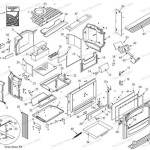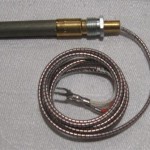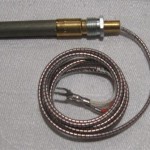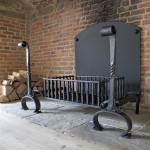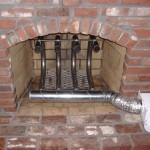Gas Log Fireplaces With Mantels: A Comprehensive Guide
Gas log fireplaces with mantels offer a blend of aesthetic appeal and functional heating for residential spaces. They provide the visual ambiance of a traditional wood-burning fireplace without the associated hassles of wood storage, ash disposal, and chimney maintenance. A mantel, the shelf above the fireplace opening, serves as a focal point and provides an opportunity for decorative display. Understanding the different types of gas log fireplaces, mantel designs, installation considerations, and safety precautions is crucial for making an informed decision.
Gas log fireplaces are broadly categorized into vented and ventless systems. Vented gas logs are designed to be used in existing fireplaces with a functioning chimney. They produce a more realistic flame and greater heat output but require the chimney to vent combustion byproducts. Ventless gas logs, on the other hand, do not require a chimney and are designed to burn cleanly, releasing minimal byproducts into the living space. They are generally more energy-efficient but may not produce as realistic a flame as vented logs. The choice between vented and ventless systems depends on individual preferences, existing fireplace infrastructure, and local regulations.
The mantel plays a critical role in the overall aesthetic of the fireplace. It provides a horizontal surface for displaying artwork, photographs, and other decorative items. Mantels are available in a wide range of materials, including wood, stone, and metal, each offering a distinct visual appeal. The selection of a mantel should complement the architectural style of the room and the design of the fireplace itself. Furthermore, the mantel's size and placement relative to the fireplace opening are important considerations to ensure safety and code compliance.
Choosing the Right Gas Log System
The selection of a gas log system involves several key considerations. Firstly, the existing fireplace infrastructure must be assessed. If a functional chimney is present, a vented gas log system is a viable option. However, if a chimney is absent or in disrepair, a ventless system may be more suitable. Secondly, the desired heat output needs to be considered. Vented gas logs typically produce more heat than ventless logs. The size of the room to be heated will influence the required BTU (British Thermal Unit) rating of the gas log system. Thirdly, the aesthetic preferences of the homeowner play a significant role. Vented gas logs generally offer a more realistic flame appearance compared to ventless logs. The budget is also a factor, as vented systems often require more complex installation procedures and may be more expensive than ventless systems.
Vented gas logs offer a realistic flame appearance and substantial heat output because they utilize the existing chimney to vent combustion byproducts, allowing for a richer, fuller flame. They often feature realistic log designs and ember beds, further enhancing the authenticity of the fireplace experience. However, they are less energy-efficient than ventless logs, as a portion of the heat is lost through the chimney. Proper chimney maintenance is essential to ensure safe and efficient operation of a vented gas log system. Regular inspections and cleaning are recommended to prevent blockages and ensure adequate venting.
Ventless gas logs are known for their energy efficiency and ease of installation. They do not require a chimney, making them suitable for homes without existing fireplace infrastructure. Ventless logs burn cleanly, minimizing the release of combustion byproducts into the living space. However, they may not produce as realistic a flame as vented logs and may generate slightly more moisture in the air. It is crucial to select ventless gas logs that are certified by a reputable testing agency, such as CSA (Canadian Standards Association) or UL (Underwriters Laboratories), to ensure safety and compliance with emission standards. Regular maintenance, including cleaning the burner and checking for proper ventilation, is important for optimal performance and safety.
The size of the gas log set should be appropriate for the fireplace opening. A gas log set that is too large can obstruct airflow and create a fire hazard. Conversely, a gas log set that is too small may not provide adequate heat output or aesthetic appeal. The manufacturer's specifications should be consulted to determine the appropriate size gas log set for a given fireplace opening. Careful measurements of the fireplace dimensions are essential for selecting the correct size. Local building codes may also specify minimum clearances and other requirements for gas log installations.
Mantel Design and Material Considerations
The mantel serves as a central design element of the fireplace. It provides a horizontal surface for displaying decorative items and enhances the overall aesthetic appeal of the fireplace. Mantels are available in a wide variety of styles, from traditional to contemporary, and can be constructed from various materials, including wood, stone, and metal. The choice of mantel material and design should complement the architectural style of the room and the overall design of the fireplace. The size and placement of the mantel relative to the fireplace opening are important considerations for safety and code compliance.
Wood mantels offer a classic and timeless look. They are available in a variety of wood species, including oak, maple, and pine, each with its unique grain patterns and color variations. Wood mantels can be stained or painted to match the existing décor of the room. They provide a warm and inviting feel to the fireplace area. However, wood is a combustible material and must be installed with adequate clearance from the fireplace opening to prevent fire hazards. Local building codes typically specify minimum clearance requirements for wood mantels. Regular maintenance, including dusting and occasional polishing, is important to preserve the appearance of a wood mantel.
Stone mantels offer a more rustic and substantial look. They are available in a variety of stone types, including granite, marble, and limestone, each with its unique textures and colors. Stone mantels are highly durable and fire-resistant, making them a safe and aesthetically pleasing choice for fireplaces. However, stone mantels are generally heavier than wood mantels and may require additional structural support. Installation of a stone mantel typically requires professional expertise. Regular cleaning with a mild detergent is important to maintain the appearance of a stone mantel.
Metal mantels offer a sleek and modern look. They are available in a variety of metals, including steel, wrought iron, and brass, each with its unique finishes and properties. Metal mantels can be custom-designed to create a unique and contemporary fireplace. They are fire-resistant and require minimal maintenance. However, metal can conduct heat, so it is important to ensure adequate insulation and clearance from the fireplace opening to prevent burns. Professional installation is recommended for metal mantels.
The height of the mantel above the fireplace opening is a critical safety consideration. Building codes typically specify minimum vertical clearances to prevent the mantel from overheating and potentially catching fire. The specific clearance requirements depend on the size of the fireplace opening and the type of fuel used. It is essential to consult local building codes and the manufacturer's instructions to ensure compliance with safety regulations. Generally, a clearance of at least 12 inches is recommended for wood mantels above a gas fireplace opening, but this can vary depending on the specific circumstances.
Installation and Safety Considerations
Proper installation of a gas log fireplace with a mantel is essential for safety and optimal performance. It is highly recommended to hire a qualified professional to install the gas log system and the mantel. A licensed gas fitter can ensure that the gas connections are properly installed and that the system is operating safely. A qualified contractor can ensure that the mantel is installed with adequate clearances and structural support. Improper installation can lead to gas leaks, fire hazards, and other safety risks.
Gas line connections should be inspected regularly for leaks. A simple soap and water test can be used to detect gas leaks. Apply a soapy solution to the gas line connections and look for bubbles. If bubbles appear, there is a gas leak. Immediately turn off the gas supply and contact a qualified gas fitter to repair the leak. Carbon monoxide detectors should be installed in the vicinity of the fireplace to provide early warning of carbon monoxide buildup. Carbon monoxide is a colorless and odorless gas that can be deadly.
Regular maintenance is essential for the safe and efficient operation of a gas log fireplace. The burner should be cleaned regularly to remove dust and debris. The logs should be inspected for cracks or damage. The pilot light should be checked to ensure that it is burning properly. The chimney should be inspected and cleaned regularly to prevent blockages. The fireplace area should be kept clear of flammable materials. Following these maintenance procedures will help to ensure the long-term safety and performance of the gas log fireplace.
Children and pets should be supervised around the fireplace. The glass front of the fireplace can become very hot during operation. Children and pets should be kept at a safe distance to prevent burns. Install a safety screen or barrier around the fireplace to prevent accidental contact with the hot surface. Educate children about the dangers of the fireplace and the importance of staying away from it. Never leave a burning fireplace unattended.
Local building codes and regulations should be consulted before installing a gas log fireplace. Building codes may specify minimum clearances, ventilation requirements, and other safety regulations. It is essential to comply with all applicable building codes to ensure the safety and legality of the installation. Obtain the necessary permits before starting the installation process. Failure to comply with building codes can result in fines and other penalties. Contact the local building department for more information about building codes and regulations.

Marquess Keenan Mantels Mm Gas Fireplace Mantel Toronto Best
Debating A Modern Or Traditional Fireplace Heat Glo

Consett Gas Fireplace Suite Low Cost Fireplaces

Welcome To Newcastle Fireplace Centre Contemporary Fireplaces And Stoves In The North East

Stovax Alborg Wood Mantel Mantels

Classical Arched Insert Fireplaces Stovax Traditional

Contemporary Fireplace Surrounds And Mantels Ideas Direct Fireplaces

Bonaparte Keenan Mantels Mb Gas Fireplace Mantel Toronto Best

Outdoor Fireplace Mantel Ideas From Capo Building Specialties

Types Of Fireplaces And Mantels The Home Depot

